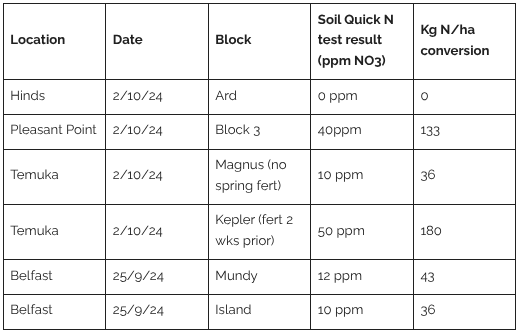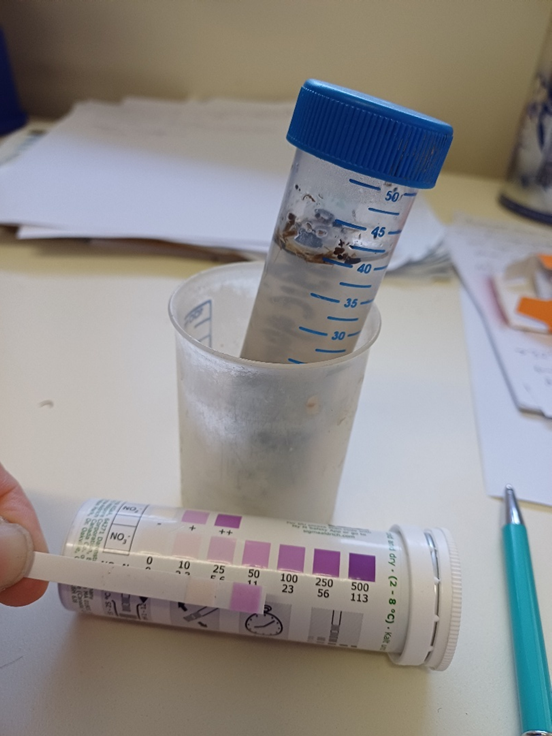© 2025 Berryworld, All Rights Reserved
We know that blackcurrants require nitrogen to support spring growth, including during flowering. Blackcurrants have a respectable ability to store N for later use, so the relevant question is whether this spring, fertilizer N is required.
In work that Murray Craighead and team did (2005-2008), they found that most of the time it didn’t make a difference whether N fert went on in spring, or autumn, or split between the two. This is because N release from soil mineralization and from reserves within the plant root system smooths out the N supply from infrequent fertilizer applications. See Lessons from the past: installment 1 Nitrogen – Notes for NZ Berry Growers
At the recent growers’ meeting we heard from Helen Boldingh, Plant and Food flowering physiology expert, that flowers with more carbohydrates in them (sugars) have a greater chance of setting fruit. Also, that nectar production (pollinator attraction) is supported by photosynthesis from nearby leaves. It seems important to make sure that spring leaves are functioning at their best to support flowers when they need to be pollinated.
For blackcurrants, the plant draws on reserves both in starch and in nitrogen that it stored from the previous season, and pulls on nitrogen available in the soil in the springtime to support spring leaf growth as well. And we suspect that there are times when spring fertilizer N is important to make up for low soil levels, after a winter where there was a lot of soil nitrate leaching, for example.
We need to know how much N the plants have on hand to work with in the spring.
There are two ways to measure nitrogen in the soil.
The table below shows spring soil nitrate testing from four Canterbury blackcurrant farms in spring 2024 (top 15 cm).

There’s a clear case for spring fertilizer when a soil test shows ZERO nitrate. It’s also clear that extra spring fertilizer isn’t needed when the soil test shows 40 ppm nitrate (which translates to around 130 kg/ha of available nitrogen). The grey area is when a soil test shows 10 ppm nitrate (about 35 kg/ha nitrogen). I would guess that no additional spring N is needed, but we should split the field (applying N to one half but not the other), and observe the impact on spring leaf growth and fruit set.

Knowing the long-term N supply from soil is useful:
If you’re getting commercial soil testing done to check overall soil nutrient levels, you can get nitrate nitrogen (the snapshot of what was available at the time the soil test was taken), as well as “Hot Water Extractable Organic N” which estimates the season-long nitrogen supply.
If you just need a nitrate snapshot, use the Quick N test. It’s….wait for it….”Quick!” and it’s cheap, and it gives instant results. You could test every block if you wanted. Get the kit and the instructions on how to use it at https://www.far.org.nz/resources/quick-n-test-kits
Below is an example of a commercial lab soil test result from blackcurrants in early October, showing that there was hardly any nitrate available in the soil that spring (2 mg/kg). The season-long estimate HWEON is also not very large (we’d expect under field conditions to get about 40kg/ha from that soil test level of 82 mg/kg). That expected mineralization would be minimal in spring cold soils, and faster as the season warms up.

With the test result above, the grower chose to apply a little N fertilizer in spring, and felt he got a positive spring leaf-growth response.
If you test and see that your soil nitrate levels are low this spring, how much N should you put on?
Well, there hasn’t been the calibration work in blackcurrants to be very precise in these recommendations. Is 35 kg of N/ha enough to support spring growth? Probably. Is 0 ppm enough? Probably not. Is 180 ppm enough? Definitely.
If your spring soil nitrate numbers are very low and you decide spring fertilizer would be a good idea, you might put on 1/3 of your total season’s budget after bud break. We could consider the blueberry fertilization recommendations out of Oregon as an example. They suggest that growers should put about 1/3 of their yearly N in spring, and don’t put it on until after bud break, which is when the roots can start to take it up.
The recommendation for Blackcurrants expected to yield 10 tonnes is 110kg/ha N, 1/3 of that is 35kg N. If your soil has a high potential for nitrogen mineralization later in the year, you can probably get away with less. Again, we don’t have the extensive trial results to go on like arable crops do, but we can at least make an educated guess.
What should you apply?
If the soil test indicates a need for K, use potassium nitrate. If not, then calcium ammonium nitrate is fine. Use ammonium sulfate if you’re trying to reduce the soil pH. The concern with urea is that in cold soils and applied just to the surface, there’s the risk of loss through volatilization. Most berry blocks will have adequate Phosphorous already, but see what the soil test says.
HOW to apply?
Now, that’s the real puzzle. If you decide to apply N in the spring, how do you get it on without damaging wet soils with compaction?
I’m interested to hear your strategies.